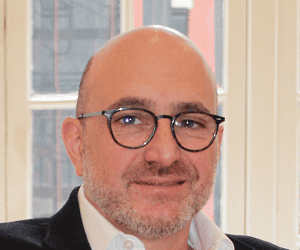Alessandro Petroni, head of Strategy and Solutions for Financial Services at Red Hat, a leading provider of open source technology, recently spoke with Global Finance about the burgeoning open source community and what it means for banking and businesses generally.

Global Finance: You talk about the growing open source community. What is it?
Alessandro Petroni: It is a collaboration among diverse people in the tech world to create new software and systems to be given away to the public—for the greater good. Open source software is free.
GF: Your firm, now part of IBM, is a leading open source provider. How do you make money selling free software?
Petroni: We don’t sell software, but the services that support the software, including maintenance, consulting, and quality assurance. We select the best open-source projects for our enterprise clients, integrate and harden it, and package it into products for the enterprise. Enterprises pay us for this on a subscription basis. Our R&D is based on open source collaboration. We don’t pay the open-source community developers. They contribute on a volunteer basis.
GF: From a CFO’s perspective, it’s clear how an organization would profit from utilizing open source software. It lowers R&D costs. Are there also advantages in contributing to the open source community?
Petroni: A bank’s technology may not be such a competitive advantage today as it was in the past. So why not release that software to the open source community? Maybe a developer will pick it up and improve it; again, this could reduce the enterprise’s overall R&D cost.
For example, Goldman Sachs (GS), several months ago released its data-modeling PURE/Alloy platform to the open-source community. PURE/Alloy models data flows between different parts of the investment bank. It has been a valuable asset for GS. GS choses the open source approach to establish leadership and drive adoption throughout the industry. If someone else picks up this software uses it and improves it, it can lower the cost of data integration across financial services partners that are also using it.
GF: Has the financial services industry been slower than other industries to adopt open source technology?
Petroni: Wall Street has been consuming open-source software for decades. Linux, the open source operating system, for instance, took off in the 2000s when Wall Street exchanges and companies began to use it in their capital markets sectors because it enabled faster trading with greater stability.
Much of the technology discussion within banks today is: How can I improve time to market? Some banks working with open-source technology have been able to improve their product release cycles from six to nine months before—to once a week—which is phenomenal.
GF: Is it common today for banks to release their proprietary software to the open source community?
Petroni: It’s not common; but beginning two or three years ago, we began to see more banks participating in open source groups like FINOS, a fintech open source community. Many of the largest banks now participate, as well as vendors like Red Hat. The solutions we create tend to be in areas of common interest, like ways for investment banks to streamline the flow of information between the buy side and sell side.
GF: You talk about the need for banks to embrace cloud computing.
Petroni: The cloud offers some amazing services like artificial intelligence and machine learning resources, computational power and storage. Today, there’s really no reason to buy hardware servers; you just go to the cloud. You pay for the services and time you need. The challenge is lack of unified experience across different cloud providers. Red Hat addresses this challenge leading with with the hybrid cloud.
GF: Aren’t there security concerns here?
Petroni: Security is a top concern for banks. Today a major bank has between 8,000 and 10,000 types of applications, and these applications are highly interconnected. But cloud providers recognize this and have been spending an enormous amount of energy and resources to ensure that users’ data are secure.
GF: Are central banks and financial regulators also using the cloud and open source technology?
Petroni: Some banks are using open source technology as an entry point for regulators to come in and check compliance and controls for things like resilience and high availability. disaster recovery. Regulators can do this on their own time; they don’t have to talk with anyone at the bank. They audit the bank on a self-service basis using APIs [application programming interfaces].



